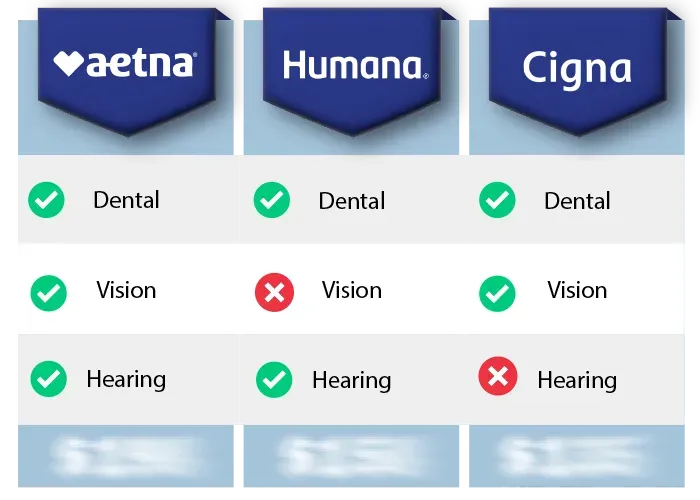Navigating the Landscape of Medicare Insurance Premiums
Medicare insurance premiums are a crucial aspect of healthcare planning for many individuals, particularly those aged 65 and older. Understanding the various components, costs, and factors influencing these premiums is essential for making informed decisions and ensuring adequate coverage. In this article, we delve into the nuances of Medicare insurance premiums, providing insights and information to help you navigate this complex landscape.
Understanding Medicare Insurance Premiums
Medicare is a federal health insurance program in the United States, primarily serving individuals aged 65 and older, as well as certain younger individuals with disabilities. The program is divided into different parts, each covering specific healthcare services, and the premiums associated with these parts can vary.
Part A: Hospital Insurance
Medicare Part A covers inpatient hospital stays, skilled nursing facility care, hospice care, and some home health care. Most individuals do not pay a premium for Part A if they or their spouse have paid Medicare taxes for a certain period while working. However, for those who do not qualify for premium-free Part A, the cost can be up to several hundred dollars per month.
Part B: Medical Insurance
Medicare Part B covers outpatient care, doctor's services, preventive services, and some home health care. The standard Part B premium amount is determined annually by the government and can change each year. Individuals with higher incomes may pay an Income-Related Monthly Adjustment Amount (IRMAA), resulting in a higher premium.
Part C: Medicare Advantage
Medicare Part C, also known as Medicare Advantage, is an alternative to Original Medicare (Parts A and B) offered by private insurance companies. The premiums for Part C plans vary widely depending on the plan, the coverage it offers, and the region in which you live. These plans often include additional benefits not covered by Original Medicare, such as vision, hearing, and dental coverage.
Part D: Prescription Drug Coverage
Medicare Part D provides prescription drug coverage and is offered through private insurance companies. Like Part C, the premiums for Part D plans vary. Individuals with higher incomes may also pay an IRMAA for Part D.
Factors Influencing Medicare Insurance Premiums
Several factors can influence the amount you pay for Medicare insurance premiums, including your income, the type of Medicare plan you choose, and whether you are enrolled in a Medicare Savings Program.
Income
Your income can play a significant role in determining your Medicare insurance premiums, particularly for Parts B and D. Higher-income individuals may pay an IRMAA, increasing their monthly premium amounts.
Choice of Plan
The type of Medicare plan you choose can also impact your premiums. Original Medicare (Parts A and B) has standardized costs set by the federal government, while Medicare Advantage (Part C) and Prescription Drug Plans (Part D) premiums vary by plan and provider.
Medicare Savings Programs
Medicare Savings Programs can help eligible low-income individuals pay for their Medicare premiums and, in some cases, other out-of-pocket costs. These programs are administered by state Medicaid programs and can significantly reduce the financial burden of Medicare premiums.
Navigating Premium Changes and Enrollment Periods
Medicare insurance premiums can change annually, and it is crucial to stay informed about these changes and how they may affect your coverage and budget. Additionally, understanding the enrollment periods for Medicare is vital to ensure you are enrolled in the plans that best suit your needs and to avoid late enrollment penalties.
Annual Changes and Notices
Each year, Medicare beneficiaries receive a "Medicare & You" handbook and an Annual Notice of Change (ANOC) from their Medicare Advantage or Part D plan provider, outlining any changes to premiums, coverage, or service area for the upcoming year.
Enrollment Periods
There are specific enrollment periods for Medicare, including the Initial Enrollment Period (IEP), the Open Enrollment Period (OEP), and the Medicare Advantage Open Enrollment Period (MA-OEP). Understanding these periods and their significance is crucial for making timely and informed decisions about your Medicare coverage.
Conclusion
Navigating the landscape of Medicare insurance premiums requires a comprehensive understanding of the various parts of Medicare, the factors influencing premiums, and the enrollment periods and changes that can impact your coverage. By staying informed and actively managing your Medicare coverage, you can ensure that you have the necessary healthcare protection while also managing your healthcare budget effectively.
With careful consideration and a proactive approach, individuals can demystify the complexities of Medicare insurance premiums, making empowered decisions for their healthcare future.
Custom HTML/CSS/JAVASCRIPT



